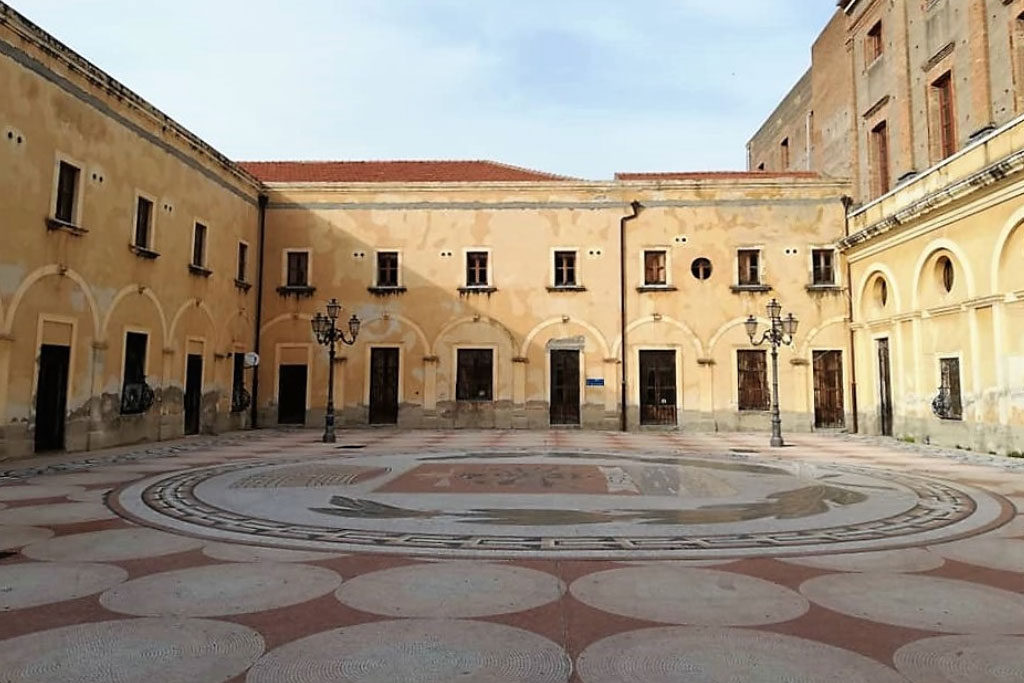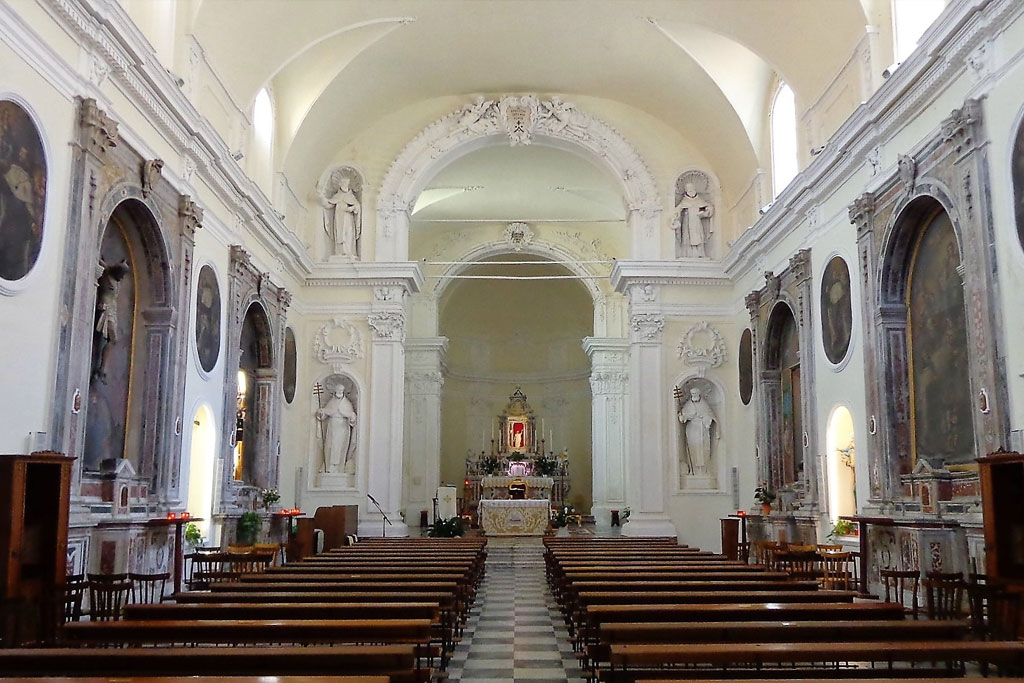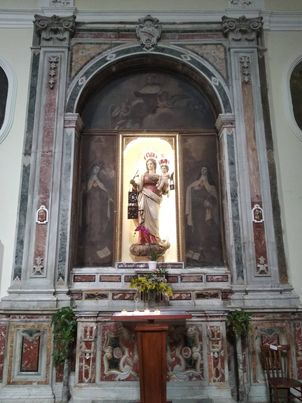The church of Our Lady of Mount Carmel first saw the light of day around the sixteenth century in an area which is now named Piazza Caio Duilio. It was occupied by two small temples dedicated to Our Lady of Consolation and to Saint Philip of Agira. Around 1570 the church and its adjoined buildings were either given or sold by the nobles Giancarlo and Gianpietro Rigoles to Father Andrea Cordaro from Tripi, which gave birth to the first Carmelite settlement. Between 1718 and 1719, Philip the 5th of Spain tried to reconquer Sicily under his domain.
Iglesia de Nuestra Señora del Carmen
Milazzo was besieged by his troops and, because of this, the sacred building was destroyed and rebuilt, eventually taking its actual form between 1726 and 1752. In 1888 it was seized once more from the Carmelites and deconsecrated. It wouldn’t be until 39 years later that it was reopened for worship in 1927. The church's façade is simple and plain while tying in elements of rococo architecture with particular attention to the reintroduction of renaissance style architecture. This architectural fusion is typical of the late Baroque period of Messina.


The actual church is enclosed between a pair of Corinthian pilasters which divide the façade from the adjacent bell towers. Above the pilisters, the curvilinear trim moulding holds up the bell gables found on the right side. There is a single entranceway to the church with classic style lines decorated with Corinthian style semi-columns and garland style motifs on the door header. In the middle of the broken pediment is the Carmelite’s coat of arms, as well as the family crest of the Baele barons, who were ancient patrons of the temple.
Between the two windows, there is a niche containing a statue of Our Lady of Consolation that welcomes the souls who enter under her mantle. It is the perfect representation of the historical and religious link to the primitive fifteenth-century church. The sacred building is an asileless hall-like room, with a large quadrilateral quire that provides seating for the clergy and houses the main altar. The apse of the church is the semicircular termination of the quire. There are six side altars framed by Corinthian pilasters that support the stucco entablature, the structure of moldings and bands which lies horizontally above the columns. On the left, in a case is the half bust of Ecce homo. To follow is the Altar of Saints Cosmas and Damian with a painting depicting the Virgin Mary portrayed between Saints Cosmas, Damian, Philip of Agira, and Anthony of Padua, The Altar of the Holy Crucifix with a polychromatic statue and a painting depicting the Three Marys, and the Altar of Our Lady of Carmel with a wooden polychromatic statute of Our lady of Mount Carmel along with canvases depicting Carmelite Saints. On the right side, we can find the Altar of the Souls in Purgatory and a painting of the Holy Family depicting St. Anne and St. Joachim with the souls of purgatory.


You will also find the Altar of Saint Lucy with a painting depicting the Virgin Mary with Saint Lucy and other saints, as well as The altar of La Pieta, with a polychromatic statue of the Virgin Mary mourning the death of Jesus Christ. Alternating within the walls of the church are eight oval stucco frames containing canvases depicting Carmelite saints. Two small sized niches between the altars contain polychromatic statues of St. Joachim and Christ the King. At the end of the Nave, on the sides of the triumphal arch, there are four niches with stucco statues of Carmelite Saints. The quire is accessed through the triumphal arch which originally dates back to 1752 and 1947. Also, in the room there is the eighteenth-century canvas of Our Lady of Mount Carmel with the Souls of Purgatory, created by Antonino Vescosi from Barcellona Pozzo di Gotto.
The main altar dates back to the eighteenth century and is entirely made of polychromatic marble, adorned with a centralized tabernacle and a pair of allegorical sculptures; on the exterior part of the altar is a circular work of art depicting Isaac’s dream . Two patrician burial monuments are testimonials of the church's ancient past: A grave monument, with the noble coat of arms, of the spouses Giovanni and Filomena Ciparo from 1583 and a marble plaque affixed to the wall between 1726 and 1727, which holds the ashes of the noble Proto family. The plaque written in Latin describes the destruction of the seventeenth-century Noble tomb following the siege of Milazzo in 1718-19.
